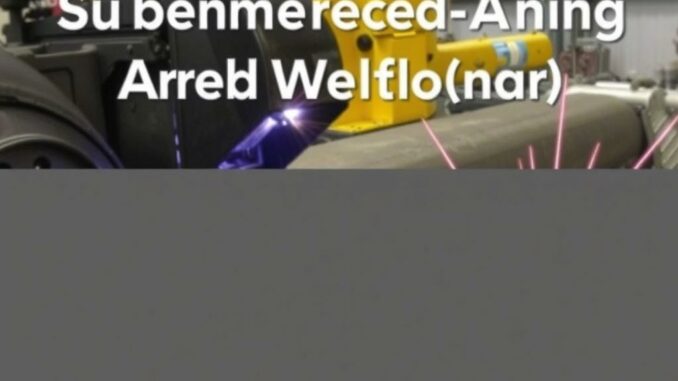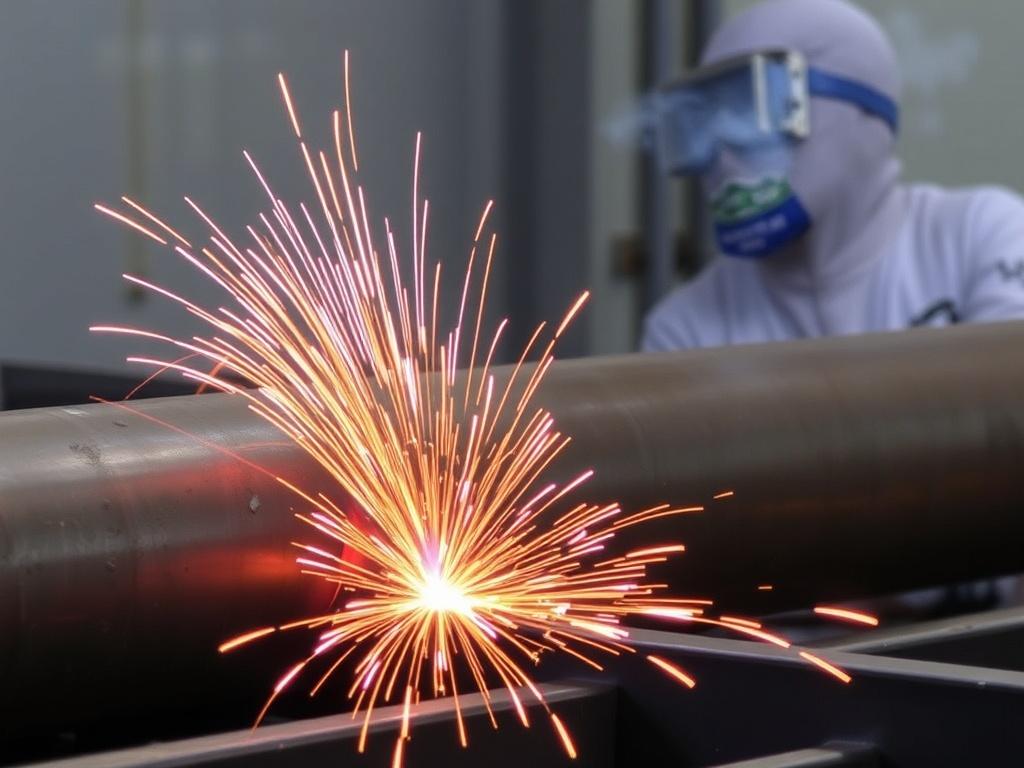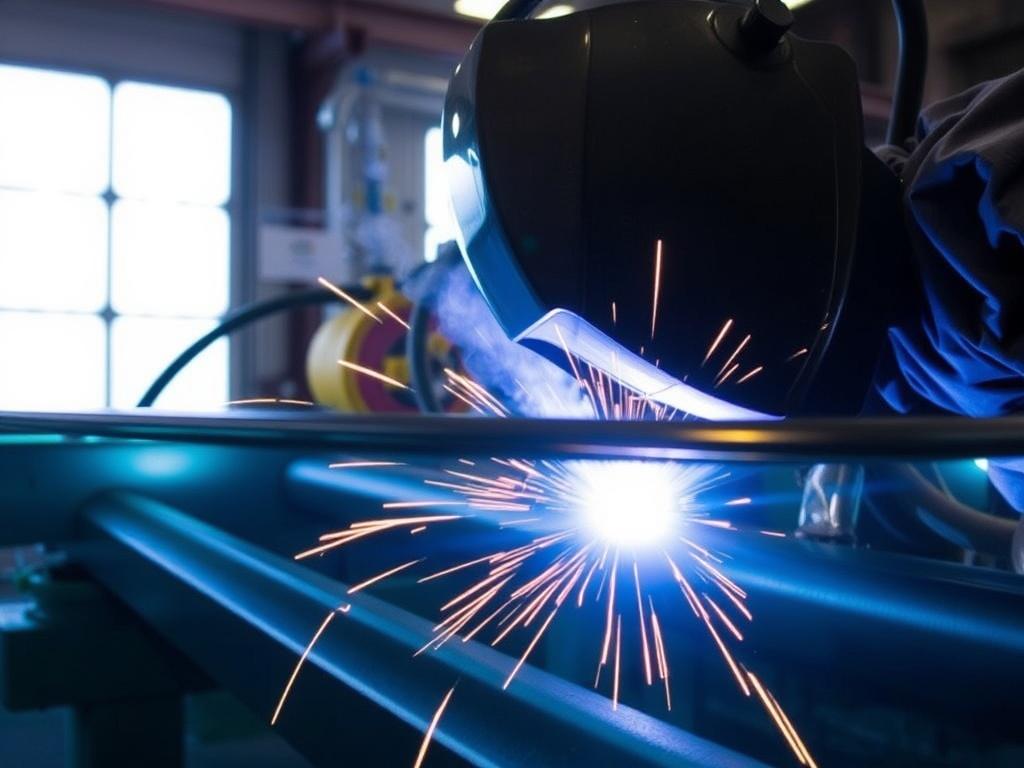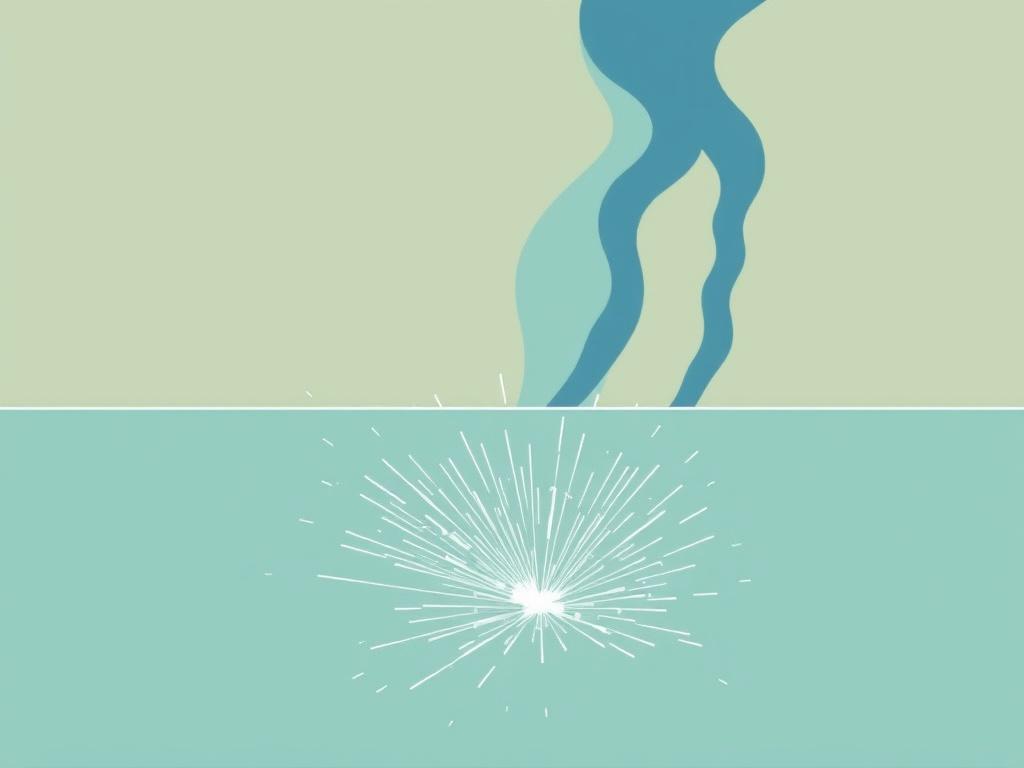
In the vast world of manufacturing and construction, welding plays a crucial role in bringing metal components together to create everything from tiny machine parts to massive infrastructure projects. Among the many welding techniques, Submerged Arc Welding (SAW) stands out due to its remarkable efficiency, strength, and adaptability. Whether you’re familiar with welding or just starting to explore this fascinating realm, understanding SAW—and its industrial applications—opens the door to seeing how industries achieve precision and durability on a grand scale.
In this extensive article, we’ll delve deep into the Submerged Arc Welding process, explore its key benefits, review the essential equipment, and then uncover the rich tapestry of industrial applications where SAW excels. By the end, you’ll not only grasp the “how” of SAW but also appreciate why it remains a go-to solution in modern industry.
What is Submerged Arc Welding (SAW)?
Submerged Arc Welding, commonly abbreviated as SAW, is a welding process that uses a continuously fed consumable electrode and a blanket of granular flux to join metal components. Unlike other welding methods where the arc is visible, in SAW, the electric arc is submerged beneath a layer of flux, which shields the weld pool from atmospheric contamination.
This process creates an extremely clean and high-quality weld because the flux layer protects the molten metal from oxidation and other harmful elements in the air. The continuous feeding of the electrode also means the welding can proceed at a high rate, making SAW efficient for thick materials and heavy-duty applications.
How Does Submerged Arc Welding Work?
The SAW process begins by laying a bed of flux on the area to be welded. Once the welding starts, the arc ignites between the electrode and the workpiece but remains submerged underneath the flux layer. The heat generated melts both the electrode and the base metal, creating a molten weld pool. Simultaneously, the flux melts and forms a protective gas as well as slag that covers the solidifying metal to shield it until it cools down.
The electrode is continuously fed from a spool, and the welder (or the automated system) moves the weld head, allowing a steady and consistent weld bead to form. Because the arc isn’t exposed, sparks and fumes are minimal, promoting a safer and cleaner working environment.
Key Elements of Submerged Arc Welding
Before exploring the industrial applications, it’s important to understand the main components involved in SAW. These include the welding power source, electrode, flux, and the welding head/mechanism.
| Component | Role | Typical Characteristics |
|---|---|---|
| Welding Power Source | Provides stable electric current for maintaining the arc | Constant voltage or constant current; DC or AC options; high amperage rating |
| Electrode | Consumable wire that melts to form the weld joint | Typically solid wire; diameters vary based on application; flux-cored wires also used |
| Flux | Granular material that covers the weld pool; protects and purifies weld metal | Composed of silicates, calcium fluoride, manganese oxide; provides slag and shielding gas |
| Welding Head/Mechanism | Holds and feeds the electrode and manages the movement of the weld | Can be manual, semi-automatic, or fully automated; controls welding parameters |
Advantages of Submerged Arc Welding

What makes Submerged Arc Welding particularly attractive in industrial contexts? The answer lies in several notable advantages that SAW offers over other welding processes.
- High Deposition Rates: SAW can deposit metal at very high speeds, enabling faster project completion and greater productivity.
- Superior Weld Quality: The molten weld pool being insulated from oxygen and nitrogen results in clean, strong, and defect-free welds.
- Deep Penetration: SAW offers excellent penetration into thick materials, making it ideal for heavy fabrication.
- Minimal Fumes and Sparks: Since the arc is submerged under flux, the process is safer for operators due to lower exposure to harmful fumes and flying sparks.
- Reduction in Post-Weld Cleaning: The flux forms slag which covers the weld and can be easily chipped off, reducing the time needed for surface cleaning.
- Automation Friendly: SAW equipment can be easily mechanized or automated, making it well suited for production lines and repetitive tasks.
These advantages translate to cost-effectiveness and reliability, which are critical in industrial environments where quality and time are essential factors.
Essential Equipment and Setup for SAW
The setup of an effective SAW station involves more than just plugging in a welding machine. Understanding the equipment specifics helps clarify how the process maintains its integrity and output standards.
Welding Power Source
The power source in SAW must be capable of supplying high currents (often above 400 amps), either through direct current (DC) or alternating current (AC). DC tends to provide more stable arcs and is often preferred for thicker materials, whereas AC can reduce electrode consumption.
Electrodes and Wire Feed
Electrodes are generally solid bare wires made from carbon steel, alloy steel, or stainless steel, depending on the base metal and application. The diameter of the electrode wire can range from 1.6 mm to over 6 mm. A wire feeder continuously supplies the electrode at a controlled speed, ensuring consistent melting and deposition.
Flux Materials
The flux used in SAW can be granular or in cake form. It’s a carefully engineered mixture designed not only to shield but also to affect the weld’s mechanical properties. Some fluxes contain deoxidizers and alloying agents that can improve the metal’s toughness and corrosion resistance.
Welding Head and Manipulator Systems
Depending on the complexity and scale of the project, welding setups might use manual torches, semi-automated carriages, or fully robotic manipulators that precisely control movement to deliver stitch-perfect welds according to programmed parameters.
Industrial Applications of Submerged Arc Welding

Now that we’ve covered the basics of Submerged Arc Welding, it’s time to explore the diverse and critical industrial applications where this welding technique plays a pivotal role. The unique strengths of SAW make it invaluable across numerous sectors, particularly where strength, speed, and integrity are paramount.
1. Shipbuilding and Marine Engineering
Shipbuilding demands welds that can withstand extreme conditions including constant vibrations, pressure, and exposure to corrosive seawater environments. Submerged Arc Welding offers deep penetration and clean welds essential for the thick steel plates used in hulls, decks, and bulkheads. Moreover, the automation potential of SAW enables shipyards to produce large sections faster without compromising quality.
Many ocean liners, cargo vessels, and offshore platforms rely on SAW specifically for fabricating their structural components.
2. Structural Steel Fabrication
Whether constructing skyscrapers, bridges, or industrial buildings, structural steel fabrication requires robust, high-quality welds. Given the thickness of steel beams and the critical safety implications, SAW is often chosen for welding wide flanges, I-beams, columns, and girders.
Because SAW can handle thick sections in single passes (or few passes), the process reduces labor and cycle times while maintaining structural integrity. This results in cost savings and timely project completion.
3. Pipeline Construction and Oil & Gas Industry
The oil and gas sector demands welding that meets stringent safety standards due to pressure and environmental constraints. Pipelines transporting oil, gas, or other fluids rely on SAW for longitudinal and girth welding of pipe joints. Its deep penetration ensures leak-proof, high-strength welds capable of surviving harsh operating environments across both onshore and offshore installations.
Additionally, submarine pipelines and pressure vessels utilize SAW because of its precision and ability to weld thick sections reliably.
4. Pressure Vessel Manufacturing
Pressure vessels need welds with superb metallurgical properties to handle high pressure and temperature without failure. SAW is the method of choice because it produces consistent welds with minimal defects. The smooth and uniform weld bead improves resistance to stress corrosion cracking and ensures longevity.
Industries like power generation, chemical processing, and petroleum refining commonly use SAW in manufacturing boilers, reactors, and other pressure-containing components.
5. Heavy Equipment and Machinery
Construction, mining, and agricultural machinery often require thick, wear-resistant metal parts. Submerged Arc Welding is ideal for assembling components like chassis, frames, and support arms that endure heavy loads and shocks. SAW’s high deposition rate translates into faster fabrication of these key parts, boosting productivity in manufacturing plants.
6. Automotive Industry
While much of automotive welding involves spot welding and MIG/TIG processes, SAW still plays a vital role in manufacturing heavy-duty trucks, trailers, and buses. For components like chassis and frames, where strength is critical, SAW delivers reliable and efficient welds.
7. Rail Industry
Railroad tracks and trains must be joined with strong and durable welds. SAW helps produce high-integrity joints in rails and structural components of train bodies, frequently via automated welding systems to ensure uniformity and speed on production lines.
8. Manufacturing of Large Diameter Pipes and Tubes
Since SAW excels in welding thick sections, it is widely used in manufacturing large diameter pipes and tubes used in water supply, sewage systems, and industrial conduits. The ability to produce long, consistent welds without defects is critical for safety and functionality in these applications.
| Industry | Typical SAW Application | Key Benefits in Application |
|---|---|---|
| Shipbuilding | Welding hull plates and structural sections | Strong, corrosion-resistant weld; high speed; minimal defects |
| Structural Steel | Beams, girders, and columns | Deep penetration; reduces multi-pass welding; cost savings |
| Oil & Gas Pipelines | Longitudinal and girth pipe welding | Leak-proof welds; suitable for thick walls; reliable under pressure |
| Pressure Vessels | Boilers, reactors, and tanks fabrication | Consistent weld quality; minimal defects; handles high pressure |
| Heavy Machinery | Frames, chassis, and load-bearing components | High deposition rate; durable welds; improves productivity |
| Automotive | Truck and trailer chassis welding | Strong welds for safety; efficient for large components |
| Rail | Rail tracks and train structural parts | Automatable; consistent weld quality; helps rapid production |
| Large Pipes & Tubes | Conduits, water lines, sewage tubes fabrication | Reliable weld integrity; efficient for thick-walled pipes |
Challenges and Limitations of Submerged Arc Welding

While SAW offers numerous advantages, it’s not without limitations. Understanding these helps engineers select the right welding method for each application.
- Limited to Horizontal or Flat Positions: SAW traditionally works best on flat or horizontal surfaces because the granular flux and molten slag need to stay in place. Vertical or overhead welding is highly challenging with this process.
- High Setup Cost: The equipment for SAW, especially when automated, can be expensive to acquire and maintain, requiring specialist operators.
- Thicker Materials Requirement: SAW is generally not economical or practical for very thin metals (usually under 3 mm thickness).
- Flux Handling and Disposal: The flux needs proper storage, handling, and disposal, particularly when contaminated with metals or used in industrial environments.
- Welding Speed Constraints on Thin Workpieces: Excessive heat input can distort thin metals, limiting the process’s use in such cases.
Future Trends and Innovations in SAW Technology
The welding industry continually innovates to improve efficiency, quality, and sustainability. Submerged Arc Welding is no exception. Here are some trends shaping the future of SAW:
Advanced Automation and Robotics
With Industry 4.0 gaining ground, SAW increasingly integrates robotic arms and computer-controlled weld heads that enable precise control and repeatability. This reduces human error, enhances safety, and allows welding of complex geometries.
Improved Flux Formulations
Research into environmentally friendly and high-performance fluxes continues. Developing fluxes that create less slag, better shielding, and produce weld metal with superior mechanical properties is a key focus.
Hybrid Welding Techniques
Combining SAW with other welding processes like laser or MIG welding for hybrid methods can increase speeds, reduce heat input, and expand the range of weldable material thicknesses and positions.
Energy-Efficient Power Sources
Modern power supplies designed for energy savings and optimal performance are reducing operational costs and the carbon footprint of welding plants.
Conclusion: Why Choose Submerged Arc Welding for Industrial Applications?
Submerged Arc Welding represents a powerful blend of speed, strength, and precision that few other welding techniques can match—especially when dealing with thick metal sections in industries where quality cannot be compromised. Its capability to produce deep, uniform, and defect-free welds while minimizing operator risk and post-weld cleanup makes it indispensable in shipbuilding, structural steel fabrication, pipelines, and many others.
While there are challenges, advances in automation, flux chemistry, and equipment are continuously expanding the horizons of SAW. In a world driven by productivity and safety, Submerged Arc Welding stands as a shining example of how technology and technique come together to create industrial excellence.
Whether you’re an engineer, a welder, or simply an enthusiast fascinated by industrial processes, understanding SAW’s mechanisms and applications offers insights into the backbone of manufacturing and construction as we know it today.
